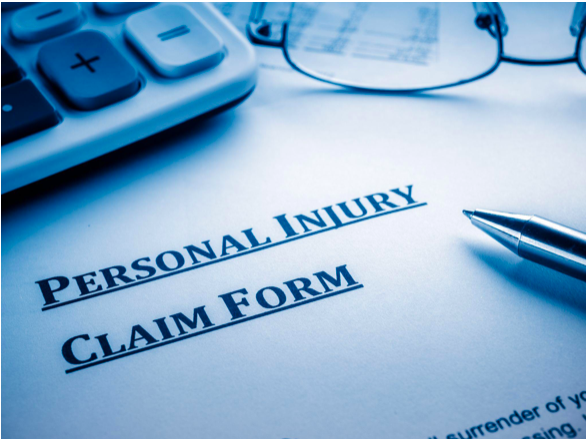World
What Happens in Your Personal Injury Claim After a Compensation Settlement?

Filing a personal injury claim with a trusted attorney is the first step to receiving compensation after an accident. As the legal case is being pursued, moving forward from there can be confusing if you don’t know what to do. Having a legal professional by your side will also increase your chances of winning the case. Read on to understand the process of a personal injury claim and what to expect after the settlement.
What Is a Personal Injury Claim?
A personal injury claim is a legal case filed by an individual, known as the plaintiff, who’s been injured as the result of someone else’s negligence, known as the defendant. This type of lawsuit is frequently filed by car accident victims when the accident has left them with injuries that negatively affect their quality of life physically and financially.
If this is your situation, then it’s advised that you contact an attorney to file your personal injury claim to seek compensation from the at-fault party. They’ll guide you on the entire legal procedure and how to get started on your case. Once your claim has been filed and your lawyer has met with the defendant, both parties can agree on the next steps.
Role of Insurers in a Settlement
How you were injured and whose fault it is plays a major role in what your settlement will be. Most often, the defendant is likely to be covered by an insurance policy. This coverage is most often used for injuries sustained by medical negligence or a workplace known as an occupational injury. For this reason, the personal injury reimbursement will be paid for by the defendant or the companies’ insurance provider.
Insurers of the person who injured you will also determine the compensation amount. They usually do this by adding up the cost of damages and multiplying it between one and five times the amount. The payout amount is then offered to you and your attorney to accept or negotiate. This is the crucial stage for insurance providers because they’re more willing to provide compensation and settle before the case can be taken to court.

Post-Settlement
What happens after depends on where in the legal process the claim ends. If the claim has been settled, then you’ll be asked to sign a few official documents that mark the end of the claim’s proceedings.
The documents needed to sign are frequently a settlement agreement. This is a type of contract that states the amount of money paid to you and the payment plan of the agreement. It also acknowledges that you accept the terms of your settlement and that the legal proceedings are over.
Take note that once you’ve signed this contract, it means everything is finalized and your claim is dismissed. After this, no more changes can be made, not even by your lawyer, so be sure to read through carefully and make sure all the information is correct.
The other type of document that could be presented to you is a liability waiver or liability release form. This is used especially by businesses after the payout of an occupational injury.
The liability waiver is essentially an acknowledgment releasing the defendant from the claims that you had brought against them. This is to ensure they can’t get sued for the same injury or for any future injuries that could happen by their fault. Signing this form is optional on your part and should only be signed after consulting your lawyer for advice. Your lawyer will then give all the relevant parties a copy of the contracts.
Endnote
What happens after your personal injury claim once you’ve been compensated is a matter of ending the legal process with official documents. These documents act as proof that the claim has been settled and that all parties agree to the terms of the contract.
On some occasions, particularly within a workplace injury claim, you may be approached to sign a waiver recognizing that you’re freeing the company from your claims and therefore can’t bring the same claims to them in the future. This type of contract is still fully your choice to sign or reject.
Throughout each step of the claim, it’s a wise decision to keep consulting your lawyer for advice on what to do, including after the settlement, to confirm and understand that the agreements are fair and work in your favor. If you’re not sure of anything, always seek an expert opinion. Consider the ideas mentioned here as you plan and prepare for your claim.
World
Criminal probe focussed on Mehtas shipping business

From Monitoring Desk
DUBAI: An Asian family linked with the shipping business is facing criminal investigation in several jurisdictions including in Dubai and Far East where the family’s companies are under active investigation now, according to the authorities in three countries.
Sanjay and Gaurav Mehta, through their companies Best Oasis Ltd in Dubai and Priya Blue Industries in Gujarat, are facing investigations over money-laundering suspicions and suspected links to the Russian oil sector, sanctioned by the western countries, sources shared.
Sanjay and Gaurav Mehta, through their companies Best Oasis Ltd in Dubai and Priya Blue Industries in Gujarat have projected an image of environmental responsibility in ship recycling. They have tout certifications, attend global summits, and positioned themselves as ESG-compliant but their business practices have come under intense probe now. Their operations reportedly involve dismantling high-risk ships, using cash transactions, and leveraging political connections to avoid accountability, a source shared looking into the companies’ affairs. The investigation is being conducted in Dubai and the Far East.
The investigators are looking at the Mehtas operations dating back to 2006 when they came to attention of the law enforcement for the first time. Priya Blue dismantled the “Blue Lady” in 2006, a vessel containing over 1,200 tons of asbestos and radioactive waste, despite protests and objections from Greenpeace. Later, the “Exxon Valdez,” notorious for a major oil spill, was renamed “Oriental Nicety” and dismantled by the Mehtas in Gujarat, drawing international attention. In recent years, their transactions have become less conspicuous but reportedly more hazardous.
In 2025, Best Oasis allegedly acquired and dismantled at least four vessels linked to sanctioned entities, including Iranian and Houthi-controlled networks. These weren’t obscure ships; they were designated under U.S. terrorism sanctions for their involvement in oil smuggling and arms transport. According to investigators, here are the details of the sanctioned ships dismantled by Best Oasis in 2025: IMO: 9155808, Name: NOLAN (SOLAN), Sanction: SDN (SDGT), Beaching: 31 Jan 2025, Plot 16; IMO: 9221657, Name: BLUEFINS, Sanction: SDN (SDGT); Beaching: 26 Feb 2025, Plot 16; IMO: 9105085, Name: CONTRACT II, Sanction: SDN risk, Beaching: Arrived mid-2025, Plot 27; IMO: 9209300, Name: GAMA II, Sanction: SDN (SDGT); and Beaching: Pending/Planned, Plot 34
All four vessels were reportedly dismantled in Alang on plots leased by proxy firms connected to the Mehtas. These short-term leases, approved on a ship-by-ship basis by the Gujarat Maritime Board, reportedly make regulatory oversight nearly impossible. Once dismantling is complete, plot registrations often lapse, leaving no long-term record, according to documents shared by the investigators in Dubai.
Rahul Mistry, a shipping compliance researcher, noted this as a growing pattern: “This is a pattern we’ve seen more frequently in the last two years sanctioned hulls arriving under the radar, processed fast, with no digital trace.”
Payments for these vessels reportedly bypassed normal financial channels. According to sources familiar with the deals, transactions were settled in cash, either on-site or through offshore handlers. One source described entire ship values being paid in foreign currency bundles, avoiding Indian and Dubai banking disclosures, said one of the investigators familiar with the matter.
A retired port official Mr. Akin Yadav, familiar with Alang and Gujarat Maritime Board approvals stated that short-term leases are routinely used to avoid scrutiny, adding, “It was never meant to be a permanent workaround. But it’s become one.”
Political connections also reportedly play a role. Union Minister Mansukh Mandaviya and Gujarat State Minister Jitu Vaghani have been linked to approvals granted for Best Oasis and its proxies. While there’s no direct evidence of personal gain, sources allege that both men used their influence to expedite approvals, slow down inquiries, and shield the companies from enforcement.
Despite these activities in India, Best Oasis is expanding under new branding. A recent joint venture in Japan with Hiroshi Abe is being marketed as a clean, regionally responsible recycling partner for Japanese shipowners.
Mariko Fujita, a Tokyo-based maritime consultant, observed, “They’re presenting themselves as a new entity with no reference to past controversies. But none of the underlying ownership or structure has changed.”
In Alang, the situation reportedly remains much the same. Plot numbers are reassigned, cash continues to circulate and the same network of breakers and handlers is reportedly involved. Individuals like Jayant Vanani (also known as Budhabhai Patel) and Ramesh Mendapara are frequently named in connection with specific beachings, including “Contract II” and “GAMA II.” Both have been previously linked to other shadow transactions involving distressed or sanctioned tonnage.
Several yards allegedly connected to Best Oasis, including Shantamani Ship Breakers and Sai Baba Ship Breakers, reportedly operate with minimal inspection, despite numerous reports of irregularities in worker safety, hazardous waste disposal, and compliance with Indian scrapping codes.
This system, according to multiple sources, appears to be intentionally designed to operate in plain sight with just enough paperwork to pass basic scrutiny but not enough to trigger meaningful enforcement. There is no indication that regulatory bodies including customs, port health officers, or environmental oversight panels have conducted full inspections of any of the sanctioned vessels listed. Most were reportedly cleared and dismantled within days of arrival.
Rahul Mistry said: “This isn’t merely a loophole; it’s reportedly a business model. Best Oasis and Priya Blue are allegedly running a high-volume, low-visibility operation that filters sanctioned, end-of-life ships through legal instruments to appear legitimate on paper. This reportedly involves routing untaxed funds and shielded actors through a well-connected political and industrial network. As global scrutiny of ESG practices intensifies, many of these activities are allegedly being whitewashed through new partnerships and branding, but the underlying mechanisms reportedly remain unchanged.”
-

 Tech5 years ago
Tech5 years agoEffuel Reviews (2021) – Effuel ECO OBD2 Saves Fuel, and Reduce Gas Cost? Effuel Customer Reviews
-

 Tech6 years ago
Tech6 years agoBosch Power Tools India Launches ‘Cordless Matlab Bosch’ Campaign to Demonstrate the Power of Cordless
-

 Lifestyle6 years ago
Lifestyle6 years agoCatholic Cases App brings Church’s Moral Teachings to Androids and iPhones
-

 Lifestyle5 years ago
Lifestyle5 years agoEast Side Hype x Billionaire Boys Club. Hottest New Streetwear Releases in Utah.
-

 Tech7 years ago
Tech7 years agoCloud Buyers & Investors to Profit in the Future
-

 Lifestyle5 years ago
Lifestyle5 years agoThe Midas of Cosmetic Dermatology: Dr. Simon Ourian
-

 Health7 years ago
Health7 years agoCBDistillery Review: Is it a scam?
-

 Entertainment6 years ago
Entertainment6 years agoAvengers Endgame now Available on 123Movies for Download & Streaming for Free
